#car fuel pressure regulator
Explore tagged Tumblr posts
Photo

Thus, the main function of the fuel pressure regulator in your Volkswagen is to maintain the proper fuel supply in the engine to fulfilling its fuel demands. Moreover, it can allow the fuel rail to build up enough fuel pressure to support the fuel injectors and keep the right mixture of air and fuel with proper fuel pressure. If the fuel pressure regulator of the car failed, then go through the infographics to identify the damages earlier.
https://www.pinterest.com/pin/716142778269152478
0 notes
Text

If there is something wrong with your Land Rover’s fuel pressure regulator, you will encounter all sorts of problems. Plus, you will have to deal with engine starting-related problems. So, keep an eye on your car’s FPR and if you find a flaw in it, consider installing a new one.
0 notes
Text

A failing fuel pressure regulator can silently impair your Porsche's performance. Malfunctions lead to erratic engine behavior, reduced efficiency, and starting difficulties. Signs like rough performance, increased fuel consumption, and exhaust smoke warrant prompt professional diagnosis and repair to ensure optimal engine functionality and driving safety.
0 notes
Text

BMW is one of the most sought-after luxury cars in the world due to its powerful performance & advanced features. However, the failure of the fuel pressure regulator has the potential to completely disrupt the smooth running and better performance of the car. Have a look at the infographics to know the causes behind fuel pressure regulator failure & symptoms associated with the issue.
0 notes
Note
bucket of facts here. This is one of my favorite f1 things ever, apologies for how long it ended up being:
In the 1980’s, formula one teams, notably BMW, added toluene to their fuel mixtures. If that word sounds like it’s probably dangerous, that’s because it is — most people know it as rocket fuel. It’s extremely poisonous and carcinogenic, but did have some upsides! For one, it was less volatile [citation needed] than what they had been using, making is slightly less dangerous in the event of a crash (by 1970’s-80’s F1 standards that just means in only turned into a small bomb most of the time). It was also denser and burned faster, so the same amount of toluene could give much more power than the standard F1 fuel.
While the new fuel did allow them to run higher turbo pressures, it did it have a tendency to increase turbo pressure as it was run during the race, and everyone ran turbos at this time. They had to dial back the turbo pressure from what it’s max could’ve been, just to compensate for the power of the fuel — this mitigated the admittedly high likelihood that the engine decided to submit its two weeks notice on two seconds of warning (read: it caught on fire and sometimes kinda maybe sorta just exploded).
Modern f1 fuel has an RON octane rating of 95-102. The toluene aided fuel had an RON octane rating of 120+. For context, your car probably runs on about 87 RON. For those unfamiliar, RON octane ratings measure how much compression fuel can be put under before it sparks, which is how engines work: compress fuel, spark, make power (I can explain that better if you want but short version is that). This incredibly high octane level allowed the engines of the time to be run at a much higher compression, which had a myriad of bonuses to the cars.
Current F1 regulations are 1.6 litre V6 engines that rev to 15,000 RPMs (max allowed) and produce a max of 850 BHP (horsepower) when they’re pushing the edge of their abilities without aid of electric components like H/KERS, which is used to boost the cars to around 1,000 BHP.
Brabham-BMW’s 1983 engine took Nelson Pique to his WDC that year. It was a 1.5 litre inline 4 (so smaller than current) and produced 12,000 RPMs, as the restrictions were a bit tighter there back then. Without electronic aid like today and a smaller engine than your standard Toyota Camry, it easily produced 850 BHP at race trim, the version built to last a whole race. When in qualifying trim, with everything tuned to maximum to get the most out of the car without it blowing up, it ran at 1,250 BHP. Original testing put it at producing over 1,400 BHP, but BMWs testing facilities couldn’t measure past that — the car put out more power than they could even register.
The teams also had a sneaky loophole: the amount of fuel allowed to be held at once in the car (refueling was banned at this time) was effectively limited to how large the gas tank could be. The teams realized that they could literally freeze the fuel and store it at cold temperatures. This compacted the fuel, allowing them to put more fuel into the gas tank — more fuel per fuel, really. This allowed drivers to be more aggressive and push harder more often, not having to worry about running out of fuel.
In case this whole toluene thing seems bad, don’t worry! It’s only used in nail polish, rubber, adhesives, and paints :3
hit me up for more facts if you want
oh my
anon bestie i might in fact be in love with you
#u definitely delivered with your fact this is so fucking silly#f1: exploiting loophole since the beginning of time#not a tag#from saph#f1#pls send facts whenever u please this is wonderful
113 notes
·
View notes
Text
Last week, I saw a Chevrolet Malibu do an amazing thing. It swerved across four lanes of traffic without signalling, braked way too early on the exit ramp, and generally made an embarrassment of itself at highway speed. I am sure that everyone who had to brake hard to avoid this numbnut thought that they were evil personified, and should not have a drivers' license.
Now, you might think that this is a little mean-spirited. Surely, all human beings are united against the force that is exploitative capitalism, and we can just give each other a little bit of slack if they're too tired or emotionally disturbed to drive with machine-like precision, right? This would be absolutely true if not for the fact that we need someone to let out our hostilities on. Can't do it to our boss, so we might as well do it to someone else in an anonymous metal box. Damn you, anonymous metal box!
Even though it seems like I am driving an impeccably-maintained, top-tier fleet of cars with perfect precision, I also make mistakes. Sometimes I leave my signal on for a little while too long, confusing the good folks around me. Once in awhile, I'll have to brake hard for a pedestrian that I didn't see at night. And every so often, I get the mix slightly wrong on the fuel pressure regulator tek-screwed to my dashboard and end up burping eight-foot-long flames of unburned fuel and nitrous oxide onto the paint of the car behind me. Those people were totally justified in getting upset with me.
The trick is to leave this anger inside the car. A couple years ago, I was followed all the way home by an angry driver. He tailgated me on the straights. It was terrifying: even though I was able to easily leave him behind on the corners, he would soon reappear in my rear-view mirror with flashing red and blue lights. When we finally got to my house, he pulled a gun on me. A gun, can you believe that? All over a little oopsy-daisy slip-up on my part, a tiny mistake that anyone could make if they drove through the plate-glass window of a Chrysler dealership and started threatening the parts department technician for not having any drum-brake rebuild kits on the shelf for a '78 Volare.
186 notes
·
View notes
Text
WaPo: How car bans and heat pump rules drive voters to the far right
Shannon Osaka at WaPo:
More than a decade ago, the Netherlands embarked on a straightforward plan to cut carbon emissions. Its legislature raised taxes on natural gas, using the money earned to help Dutch households install solar panels. By most measures, the program worked: By 2022, 20 percent of homes in the Netherlands had solar panels, up from about 2 percent in 2013. Natural gas prices, meanwhile, rose by almost 50 percent. But something else happened, according to a new study. The Dutch families who were most vulnerable to the increase in gas prices — renters who paid their own utility bills — drifted to the right. Families facing increased home energy costs became 5 to 6 percent more likely to vote for one of the Netherlands’ far-right parties. A similar backlash is happening all over Europe, as far-right parties position themselves in opposition to green policies. In Germany, a law that would have required homeowners to install heat pumps galvanized the far-right Alternative for Germany party, or AfD, giving it a boost. Farmers have rolled tractors into Paris to protest E.U. agricultural rules, and drivers in Italy and Britain have protested attempts to ban gas-guzzling cars from city centers.
That resurgence of the right could slow down the green transition in Europe, which has been less polarized on global warming, and serves as a warning to the United States, where policies around electric vehicles and gas stoves have already sparked a backlash. The shift also shows how, as climate policies increasingly touch citizens’ lives, even countries whose voters are staunchly supportive of clean energy may hit roadblocks. “This has really expanded the coalition of the far right,” said Erik Voeten, a professor of geopolitics at Georgetown University and the author of the new study on the Netherlands.
Other studies have found similar results. In one study in Milan, researchers at Bocconi University studied the voting patterns of drivers whose cars were banned from the city center for being too polluting. These drivers, who on average lost the equivalent of $4,000 because of the ban, were significantly more likely to vote for the right-wing Lega party in subsequent elections. In Sweden, researchers found that low-income families facing high electricity prices were also more likely to turn toward the far right. Far-right parties in Europe have started to position themselves against climate action, expanding their platforms from anti-immigration and anti-globalization. A decade ago, the Dutch right-wing Party for Freedom emphasized that it wasn’t against renewable energy — just increasing energy prices. But by 2021, the party’s manifesto had moved to more extreme language. “Energy is a basic need, but climate madness has turned it into a very expensive luxury item,” the manifesto said. “The far right has increasingly started to campaign on opposition to environmental policies and climate change,” Voeten said.
The pushback also reflects, in part, how much Europe has decarbonized. More than 60 percent of the continent’s electricity already comes from renewable sources or nuclear power; so meeting the European Union’s climate goals means tacklingother sectors — transportation, buildings, agriculture.
[...] Some of these voting patterns have also played out in the United States. According to a study by the Princeton political scientist Alexander Gazmararian, historically-Democratic coal communities that lost jobs in the shift to natural gas increased their support for Republican candidates by 5 percent. The shift was larger in areas located farther from new gas power plants — that is, areas where voters couldn’t see that it was natural gas, not environmental regulations, that undercut coal.
Gazmararian says that while climate denial and fossil fuel misinformation have definitely played a role, many voters are motivated simply by their own financial pressures. “They’re in an economic circumstance where they don’t have many options,” he said. The solution, experts say, is todesign policies that avoid putting too much financial burden on individual consumers. In Germany, where the law to install heat pumps would have cost homeowners $7,500 to $8,500 more than installing gas boilers, policymakers quickly retreated. But by that point, far-right party membership had already surged.
The Washington Post explains what may be at least partially causing the rise of far-right extremist parties in Europe, Conservatives in Canada, and the Republicans in some parts of the US: rising energy costs that low-income people are bearing the brunt of.
In the US, right-wing hysteria about gas stove bans and electric vehicles are also playing a role.
101 notes
·
View notes
Text
The inner workings of Boothill


Trying to dissect him so, hear me out. (not too much tho, i'm not a car expert I just like looking stuff up)
I'd like to think he's powered by something similar to hydrogen instead of liquid fuel because;
This game has really advanced technology, so for someone like Boothill to still use the the 'old' fueling method would make less sense
The hole on his back is expose and if he had liquid fuel in him instead of compressed gas it would just...get everywhere. Not electric either because the fuel port only have 1 big hole as opposed to multiple small ones
No emissions this way, sure there's still steam but no harmful gasses and I think he'd prefer it that way.
It just makes a lot more sense for him to have a fuel cell instead of a fuel tank. Before I get into the more general headcanons I have I want to briefly explain how a hydrogen car is powered -
who am i kidding, this is a headcanon post not a chemistry class
oxygen + hydrogen go IN ⇒ energy + water come OUT
moving on;
I like to think looking after his body is something he takes a lot of pride in doing. It keeps him rooted and if anything goes wrong he'd figured it out fast
Has a temperature regulator close to his collarbone to regulate this head's temperature (since he doesn't have a body anymore). Takes in heat from the fuel cell and also has a coolant line running through it to adjust the temp.
He prefers mixing his own coolant using antifreeze and water over buying the premade stuff. Gives him more control over what goes into him and he just likes to keep tabs on everything about his body.
Distilled water only. Demineralized water? fudge no, and don't even think about suggesting tap water
Not too picky about the color but prefers blue, just makes it easier to check for leaks (yellow makes it look like he peed himself and red is, well, blood)
Flushes the reservoir once a year even thought that's not necessary. He just had it go bad once (the sickly sweet smell covered him for days) so he's not willing to take any risks
Doesn't need oil on the inside since the fuel cell has no moving parts but he does need lube for his joints. Has a preference for synthetic oil so yes, he still smells like oil. rejoice.
He takes in oxygen from various parts of his body and also expels a lot of vapor during fights, it's partly why he wears such little clothes.
The main inlets are the small holes under his chest but sorta outwards? These ones

And the holes in his hands as well. If you happen to touch those parts you'd feel some suction but he will get mad so maybe don't do that
Other less notable inlets are his chest + ab plates. They move apart slightly and can take in air if needed, but due to how much he moves around they're not that reliable, it's just a safety net.
He can store a small oxygen tank if he ventures anywhere with none of it (like in water or just on a planet with no air) but it limits his movements so he prefers not to.
As for the exhaust, it comes out from between the silver plate on his back.
Usually it's just low pressure steam. People wouldn't even notice it
but when he get's in a fight, he consumes more fuel, so steam can come out full force and hot enough to cause third degree burns to the unfortunate soul standing behind him.
If you listen closely you'll here his air inlets making noise too, it's why he gets very noise during battles.
It's hard for him to go stealth mission like this so he has a feature to block the exhaust when needed, it cools the steam down into water and stores it until he has time to empty it out.
In colder places he just straight up starts dripping water down his back when fighting. Yes it's safe to drink, no you can't lick his back maybe if you ask nicely he'll let y-
ps: DON'T drink water from a hydrogen car. The water itself is initially drinkable (literally just pure H2O) but by the time it comes out it's already been in contact with the inside of the exhaust pipe and you don't know what kinda dust/gunk gets in there.

any car experts/enthusiasts feel free to correct me lol. Everything here is just from 3 hours of surface level research
#honkai star rail#boothill#hsr boothill#hsr headcanons#hsr#c00kie.writes#i only like learning new things if it's for a headcanon#they should have a math evet in hsr with statistics and probabilities with ratio and screwllum giving you tips
113 notes
·
View notes
Note
https://x.com/F1Techy/status/1797338007860662614
is this real?

Nope, whoever this person is, they are way off and they have no sources so don’t believe a word they say
In fact Mercedes don’t make their own fuel pumps, let alone McLaren’s. No team has made their own fuel pumps since 2021.
Fuel pumps are categorised as a Standard Supply Component which means that they are designed and manufactured by a third party designated by the FIA.
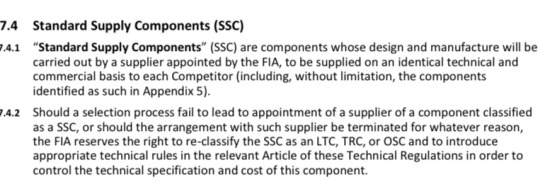
This means that the same company makes all of the fuel pumps for all of the teams on the grid, so if there was anything going on with a fuel pump they would be going back to this third party not Mercedes.
Just because someone has a blue tick, doesn’t mean that they know what they are saying.
Full list of SSC parts below (from FIA regulations)
Wheel covers
• Clutch shaft torque
• Wheel rims
• Tyre pressure sensor (TPMS)
• Tyres
• Fuel system primer pumps, and flexible pipes and hoses
• Power unit energy store current/voltage sensor
• Fuel flow meter
• Power unit pressure and temperature sensors
• High-pressure fuel pump
• Car to team telemetry
• Driver radio
• Accident data recorder (ADR)
• High-speed camera
• In-ear accelerometer
• Biometric gloves
• Marshalling system
• Timing transponders
• TV cameras
• Wheel display panel
• Standard ECU
• Standard ECU FIA applications
• Rear lights
69 notes
·
View notes
Text
Racing Hearts - Part 8
A Max Verstappen Imagine
Pairing : Max x fem! reader/driver
End Game
Part 1 | Part 2 | Part 3 | Part 4 | Part 5 | Part 6 | Part 7
Thank you to all you guys for loving Racing Hearts. It was so fun writing this. Ciao!
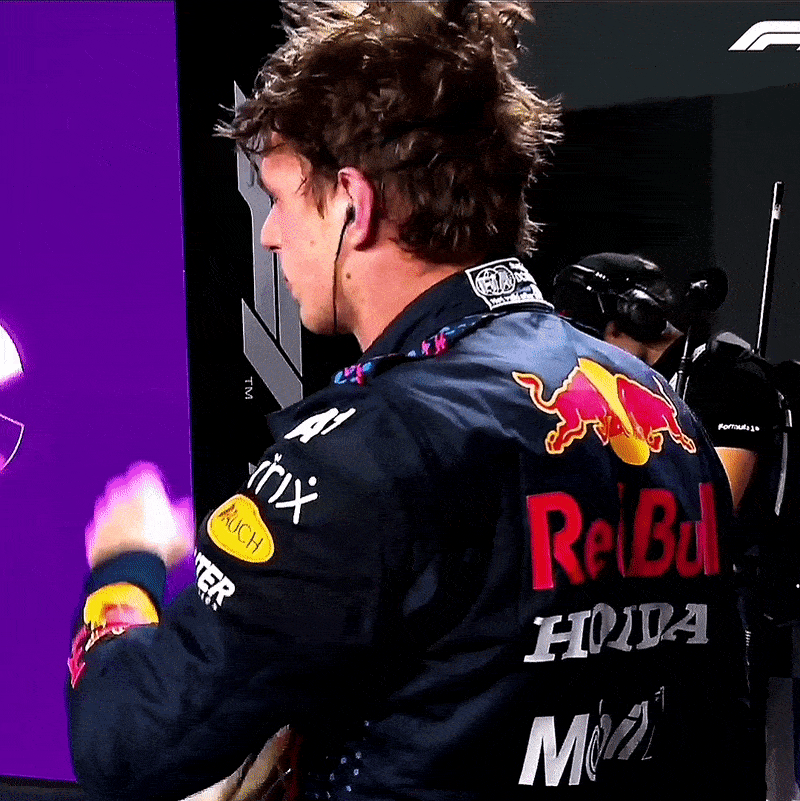
The paddock buzzed with whispers, and the air was thick with tension as the unexpected twist in the investigation sent shockwaves through the racing world. Red Bull, once on the pedestal of triumph, now found themselves on the precipice of scandal.
Article 1 - The Unraveling of Champions:
In a shocking turn of events, Red Bull Racing's triumphant champions, Max Verstappen and Y/N, find themselves ensnared in controversy. The media spotlight has shifted from their on-track victories to an investigation that threatens to tarnish their legacy.
Every move made by the once-celebrated duo is now under a microscope. From their pit lane conversations to their off-track interactions, no detail is too small to escape scrutiny.
Article 2 - Team Unity Tested:
Red Bull Racing, known for its unyielding team spirit, now faces a formidable challenge. The camaraderie in the garage, once a pillar of strength, is strained as doubt casts a shadow over the team.
Whispers of internal discord circulate as team members navigate the pressure. Will the unity that fueled their victories withstand the relentless storm of criticism?
Article 3 - Champions Under Fire:
The champions who once dominated the podium now find themselves defending not just their titles but their very reputation. Max Verstappen and Y/N are in the eye of a media storm that threatens to dismantle the success they worked tirelessly to achieve.
Critics question every decision, every statement, amplifying the strain on the champions who are accustomed to roaring engines, not deafening scrutiny.
Article 4 - Red Bull's Crisis Management:
With the championship-winning team in crisis, Red Bull Racing grapples with the fallout. The pressure to protect its image intensifies as media speculation reaches a fever pitch.
As the team navigates this uncharted territory, the question remains: Can they weather the storm and emerge stronger on the other side, or will the drama prove too much for the once-invincible Red Bull Racing?
Article 5 - Fragile Foundations:
The foundation of Red Bull Racing, built on triumph and unity, now faces its most formidable test. Max Verstappen and Y/N bear the weight of skepticism, their once unassailable reputation now hanging in the balance.
In the midst of this turmoil, the true measure of champions is revealed. Will they crumble under the pressure, or will they rise above, proving that even in the face of doubt, they remain a force to be reckoned with?
Max and you, once celebrated champions, now faced relentless scrutiny and criticism from the media. Every move was dissected, every word analyzed. The team rallied behind you, but the pressure threatened to tear everything apart.
Yet, the drama took an unexpected turn. A new piece of evidence emerged, seemingly casting doubt on Red Bull's innocence. The media frenzy escalated, and the weight of the situation became unbearable.
The turning point came when an internal audit within Red Bull Racing uncovered irregularities in Max Verstappen's car from a previous race. The investigation revealed a potential breach of technical regulations, raising questions about the legitimacy of Max's victories.
In a surprising twist, the team decided to make this information public before the governing bodies could launch their own investigation. The move was an attempt at transparency, but it inadvertently ignited a media firestorm. Headlines screamed about Max's car possibly being in violation of the rules, casting doubt not only on his recent achievements but the entire team's credibility.
Max, sensing the potential damage to the team's reputation, made a bold and self-sacrificing decision.
In a press conference that echoed with the clamor of flashing cameras and probing questions, Max announced, "To protect the integrity of Red Bull Racing, I've decided to step away from the team temporarily while the investigation unfolds. I want the focus to be on racing, not distractions. I'll do whatever it takes to ensure Red Bull's legacy remains untarnished."
The room fell silent as the gravity of Max's sacrifice sunk in. The farewell was sudden and heart-wrenching.
The racing world, already shaken by the scandal, was now faced with the absence of one of its brightest stars. The headlines screamed of Max's sacrifice, but they couldn't capture the emotional weight of the moment.
Days turned into weeks, and the investigation continued. The absence of Max left a noticeable void in the team, and the once-united Red Bull Racing struggled to find its footing.
But then came the calm after the storm.
Headline: The Unraveling of Baseless Allegations
In a shocking revelation, the evidence that sent shockwaves through the racing world, casting doubt on Red Bull Racing's integrity, has been debunked. An internal re-evaluation by the governing bodies exposes the initial findings as groundless, leaving Max Verstappen and the team vindicated.
“Mercedes Issues Apology”
In an unprecedented move, Mercedes, the team that had been the primary voice behind the allegations, issued a public apology. Toto Wolff, team principal of Mercedes, conveys regret for the premature accusations and acknowledges the lack of concrete evidence against Red Bull Racing.
"In the spirit of fair play and competition, we must acknowledge when we are wrong," Wolff states. "Our initial concerns were based on incomplete information, and we sincerely apologize to Red Bull Racing, Max Verstappen, and the entire Formula 1 community for any distress our statements may have caused."
Max, having withdrawn from the limelight during the investigation, returned to Red Bull Racing with a mixture of relief and determination.
The racing community, having weathered the storm of controversy, was left to reflect on the implications of baseless allegations and the impact they can have on the integrity of the sport.
But you two were far from everywhere. Far from the world of racing, in your world.
In Monaco, you were at Max's house overlooking the azure waters. The racing season had come to an end, and the echoes of the dramatic year lingered.
"I never thought we'd make it through," Max confessed, his eyes meeting yours on the balcony.
"Neither did I," you replied, a sense of shared resilience in your gaze.
The sun dipped below the horizon, casting a warm glow on the scene. Max wrapped his arm around you, pulling you closer. "But here we are, stronger than ever."
It was race day. The Bahrain Grand Prix. Max and you were successfully navigating the ups and downs of your life together.
After the post-qualifying interview, Max pulled you away from the lively press room to a secluded, dimly lit room. He pushed you against the wall, sending a shiver through your body.
"So, Y/N, how about letting me win this time?" Max's words, warm against your ear, sent a rush of heat through you.
"In your dreams," you retorted.
Max's grin broadened, "This is going to be so much fun." Without hesitation, he pulled you into a kiss that defied the confines of the shadowy room. It was a fiery blend of desire and an energy that left you breathless.
When the kiss finally broke, Max locked eyes with you, a mischievous glint shining.
"Ready, partner?"
#max verstappen#f1#max verstappen imagines#max verstappen imagine#f1 imagine#f1 fanfic#f1 fic#max verstappen x you#max verstappen x reader#formula 1 imagine#formula 1
95 notes
·
View notes
Note
I think a lot of the press and pressure surrounding Danny is not just because he's very famous, but because he is tied to Red Bull, which is the current dominating team. With both seats tied down in McLaren and Ferrari, it's a given that the second seat at Red Bull will be a big talking point for press and the community at large. This is likely why Danny, Checo, and Yuki get such a spotlight I think, and unfortunately with that spotlight comes a lot of negativity.
I think Danny's teammate is not helping the negativity too. First, a lot of the F1 community can't seem to understand that Yuki has gotten better since his rookie season, and it was expected that Yuki would be dominated by Daniel this season. The unexpectedness is an easy way to create press. Lots of people seem to also use the excuse that "Daniel is washed" to explain why Yuki is doing so well this season instead of acknowledging his progress so people's assessment of Yuki kind of adds to the negativity. My opinion is the reality is that as you said, Yuki is doing well, and potentially these regulations or the car itself don't suit Daniel and his driving style (which apparently are quite different to Yuki's).
Finally I think the existence of Liam is fueling people to talk more about the VCARB seats. People want to see him in the sport so there's also pressure on Yuki and Daniel to perform or get replaced by Liam, and so of course people are going to talk about how they're both performing (and be very dramatic about it).
I agree with everything! Especially what you said about Yuki. He's become such a good driver and anyone who scoffs at Daniel for being outqualified by him this season is confusing Yuki's skill for Daniel's lack of it. The car is what it is. There's another ask in my inbox talking about how car development takes a lot longer than we expect. I hope we get to see both VCARB boys moving up the pack this season, regardless of what type of progress that is.
As to Redbull, you're absolutely right. Having Max Verstappen as the poster child to compare all RB drivers to is no small thing. Especially with all of the Redbull movement we saw with Ricciardo, Albon, and Gasly, I think it's natural that people are expecting more of a bloodbath from F1's top team.
The public being familiar with Liam is definitely interesting too! I think the existence of Liam Lawson really shows how many talented young drivers (Bearman, Doohan, Antonelli) are ready and just waiting for their chance in F1. People love an underdog! And, really, they want another wunderkind.
As a side note, I see a lot of noise surrounding Lawson for Daniel's seat, but we should consider the other side of things too. Yuki is driving well. I think there's a chance Yuki gets a better contract with a different team and Liam will end up in that VCARB seat. I wonder how Honda would feel about that.
#f1#formula 1#daniel ricciardo#formula one#red bull racing#dr3#yuki tsunoda#liam lawson#vcarb#visa cashapp rb
26 notes
·
View notes
Note
got any favorite cars from the 24 hours of lemons? (and perhaps some facts about them)
Sure, but not before explaining to the audience!
So, you know how, when you start your car, you turn the key and it starts, and you don't have to fiddle around trying to get the air/fuel mixture to make the damn thing run and stop embarrassing you? And how it has disc brakes, halogen lightbulbs if you've got the standard version and a wing if you've got the sporty one? Yeah, this is all thanks to the century-old 24 Hours of Le Mans, so coveted by manufacturers as to push them to develop all those innovations which would later trickle down into sportscars. They made two movies about it. It is, without question, the most prestigious, serious and expensive endurance race ever.
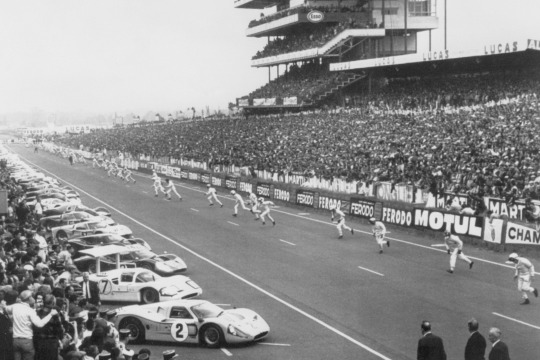
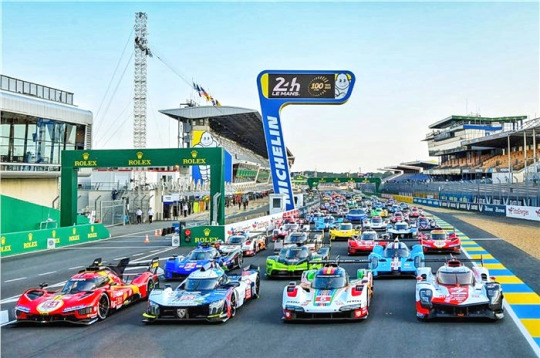
And this is the 24 Hours of Lemons - without question, the least prestigious, serious and expensive endurance race ever.

It is most famous for the rule that ensures that: to keep you from racing anything but a lemon, a beater, a crapcan, a piece of... well, by now even the unaware have figured out what lemon means in the car world, there is a budget cap. To be precise, $500. Yes, that includes both car and performance enhancing modifications - but notably exempt are safety equipment and decorations. I say notably because decorations are a key component of the Lemons atmosphere in a way I consider best conveyed by a "progressively gets worse" slideshow.


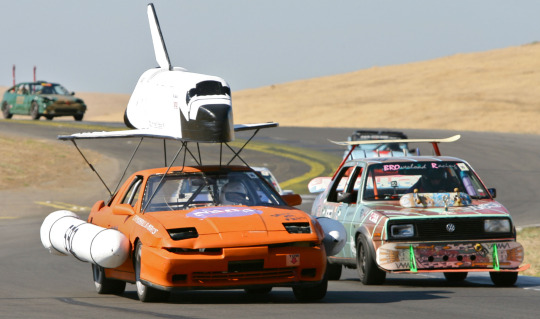





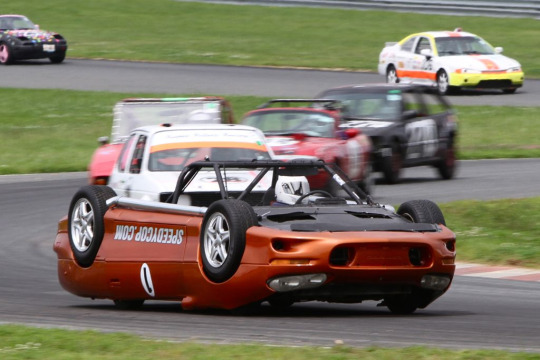


Yes, these are all real vehicles that raced. As you can imagine, regulations are pretty lax. And mostly vibe-based.
So, now that we're up to speed, my favorites!
Favorite as in greatest job from the team? Probably (although I am biased) the Eyesore Racing Miata.
youtube
And since you asked for some fun facts, I have a little treat for you that even the typically impeccable Donut Bumper (or lack thereof) to Bumper (or lack thereof) video about it missed out on:
The team won Lemons' coveted Best Use Of Dangerous Banned Automotive Technology award (yes that is a thing) by cleverly reusing the motor that used to drive the pop-up headlights!
youtube
Favorite as in coolest car used? That might be a tossup (i.e. I am not going to wait for the undoubtedly long list of cooler base cars to shower my mind so I will call it a tossup) between the Chrysler Conquest ran by multiple teams though Lemons' history (specifically the TSis for their sexy flared fenders)...


... and B-Team Racing's Lotus Elite (seen here in two of its many liveries) which, due to its newfound Chevy engine, earned it the name Chotus. Why yes there's a website.


Favorite as in most beautiful car used? That might be a tossup between French Foreign Legion Action Team's Peugeot 505...


...or the engine-swapped second generation Chevrolet Corvair Coupe of... wait, multiple teams?
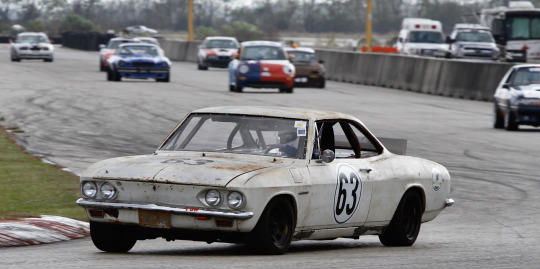

Favorite in terms of most beautiful decorations? That might be a tossup between the Honda Accord of Stanford students team Buck Ferkeley...
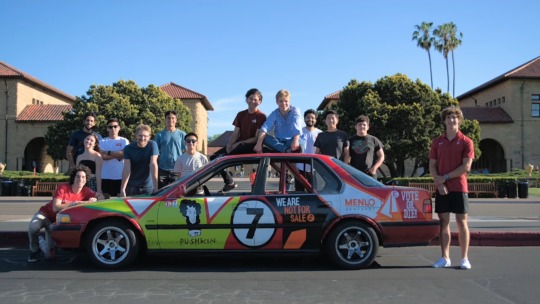

...and SilverSleeve Racing's incredibly-engined frankensteined Wolseley Hornet (for when a Mini is just not coupe nor posh enough)


Favorite as in greatest combination? That might be a tossup between two incredibly different interpretations of sportscar + truck: the Boneyard Butchers' mix of Saturn Sky and Chevrolet Colorado -the more you look at it, the harder it goes-...


...or the Porsche Honkeys' outstanding take on the popular Porsche 944 + V8 recipe that came when they decided to use the rest of the Chevy C10 they got for the engine: the Mulletmobile.
youtube
Favorite as in the bravest, most heroic, most Lemons feat? Well, given Lemons started as a way to experience racing without the pressure and expectations of high-tier stuff and eternally heralds the notioon that a racecar is any car you race, how could I ever go with anything but the far-too-slow-for-any-steadiness-to-remedy, Cali-bought-and-roadtripped-to-Kansas Toyota motherfucking Chinook.

Favorite as in favorite team name? I doubt it, but here you go: Off To Gay Porn. They called themselves this to ensure everyone who beat them could proudly say they beat Off To Gay Porn! And as you could notice, yes, so many of them are this good.
youtube
Links in blue are posts of mine explaining the words in question - if you liked this post, you might like those!
#24h of lemons#na mazda miata#chrysler conquest#mitsubishi starion#(they are the same car just different badges)#lotus elite#peugeot 505#wolseley hornet#mini#saturn sky#chevrolet colorado#porsche 944#chevy c10#toyota hilux#toyota chinook
67 notes
·
View notes
Text
New Nozzle
If you know cars or trucks, you might think this is a big fuel nozzle. It's a nozzle for a 500 kW auxiliary engine.

But this is the nozzle for our 12000 kW main engine, both 4 stroke 6 in line funny enough.

Let's install it on the fuel valve/ nozzle body. We need a nut, a small spanner and a bit of hydraulics to torque it to the required 1600 Nm.




Now we put the internals in it, those allow us to regulate the opening pressure. This injector came out of the engine with a broken spring!


Testing! The opening pressure is set to 600 bar.

[video in a reblog, I hope, it doesn't want to load?? why tumblr?]
All good, let's wrap it up and put it stand by for future use. Oh, and a picture of how dirty the nozzles come out of the engine, (running on Heavy Fuel Oil), yes these nozzle tips are use and throw away parts for us.


#Did i finally post something about what I actually do on this boat?#I guess I did#weergang#merchant navy#yes I need a chain hoist to move it around#its a 300kg piece of steel
10 notes
·
View notes
Text
Wing Thoughts
Could not sleep due to wing thoughts last night, so here you go
Note: I’m working off the assumption the wing base goes from the shoulder blade to a little above where your ribs end. Also that wings are about three times your height in length, so you can’t really pull things over them.
Washing - Wings are very difficult to wash on your own, often family, lovers, or even close friends will help each other wash wings. There are devices to wash your wings on your own, but it’s more difficult and it’s considered better for others to do it.
Bras- The most common has a central back strap and hooks to the sides under the wings, with two straps in the front. Doctors don’t recommend since the do put pressure on the back of the neck. 2nd best is basically a corset. Worst is middle strap that uses the neck for support with a triangle piece in the front since it puts a lot of weight on the neck. Also hooks to the side and possibly on the neck.
Shirts- Tend to button/zip/etc. under the wings for pullovers. Button-ups and jackets tend to button over the wings.
Medical - Wings braced with rods attached to back piece, attachment to back piece and wing joint piece in rod have adjustable angles to keep correct wing shape. Back braces have wing slits from the top and buckle at the sides to put on, slightly uncomfortable and working on being improved. Sometimes feathers must be plucked to bandage wounds, hurts the same way waxing hair does just larger scale. Shed and grow the same way as hair.
Growing up - Children have down that turns to flight feathers during puberty. Controversy about schools teaching flight, considered “too dangerous” and “a parent’s job”.
Flying laws - A combo of driving and air traffic laws. Air tech invented a lot earlier. Airplanes are a lot like cars, they fly higher than people due to regulations. Commercial fly highest because of pressurized cabins. There are different landing zones for people and planes, advised to stay far away from opposing landing zones.
There’s still a lot of ground transport since flying is a lot of work and airplanes require a lot of fuel. I minute of flying with gliding is the same as a one minute jog, flying takes a lot of stamina. Flying is also seen as more risky than ground transport since there is a higher chance of injury.
11 notes
·
View notes
Text
in the beginning… (the first fact)
bucket of facts here. This is one of my favorite f1 things ever, apologies for how long it ended up being:
In the 1980’s, formula one teams, notably BMW, added toluene to their fuel mixtures. If that word sounds like it’s probably dangerous, that’s because it is — most people know it as rocket fuel. It’s extremely poisonous and carcinogenic, but did have some upsides! For one, it was less volatile [citation needed] than what they had been using, making is slightly less dangerous in the event of a crash (by 1970’s-80’s F1 standards that just means in only turned into a small bomb most of the time). It was also denser and burned faster, so the same amount of toluene could give much more power than the standard F1 fuel.
While the new fuel did allow them to run higher turbo pressures, it did it have a tendency to increase turbo pressure as it was run during the race, and everyone ran turbos at this time. They had to dial back the turbo pressure from what it’s max could’ve been, just to compensate for the power of the fuel — this mitigated the admittedly high likelihood that the engine decided to submit its two weeks notice on two seconds of warning (read: it caught on fire and sometimes kinda maybe sorta just exploded).
Modern f1 fuel has an RON octane rating of 95-102. The toluene aided fuel had an RON octane rating of 120+. For context, your car probably runs on about 87 RON. For those unfamiliar, RON octane ratings measure how much compression fuel can be put under before it sparks, which is how engines work: compress fuel, spark, make power (I can explain that better if you want but short version is that). This incredibly high octane level allowed the engines of the time to be run at a much higher compression, which had a myriad of bonuses to the cars.
Current F1 regulations are 1.6 litre V6 engines that rev to 15,000 RPMs (max allowed) and produce a max of 850 BHP (horsepower) when they’re pushing the edge of their abilities without aid of electric components like H/KERS, which is used to boost the cars to around 1,000 BHP.
Brabham-BMW’s 1983 engine took Nelson Pique to his WDC that year. It was a 1.5 litre inline 4 (so smaller than current) and produced 12,000 RPMs, as the restrictions were a bit tighter there back then. Without electronic aid like today and a smaller engine than your standard Toyota Camry, it easily produced 850 BHP at race trim, the version built to last a whole race. When in qualifying trim, with everything tuned to maximum to get the most out of the car without it blowing up, it ran at 1,250 BHP. Original testing put it at producing over 1,400 BHP, but BMWs testing facilities couldn’t measure past that — the car put out more power than they could even register.
The teams also had a sneaky loophole: the amount of fuel allowed to be held at once in the car (refueling was banned at this time) was effectively limited to how large the gas tank could be. The teams realized that they could literally freeze the fuel and store it at cold temperatures. This compacted the fuel, allowing them to put more fuel into the gas tank — more fuel per fuel, really. This allowed drivers to be more aggressive and push harder more often, not having to worry about running out of fuel.
In case this whole toluene thing seems bad, don’t worry! It’s only used in nail polish, rubber, adhesives, and paint-related-products :3
hit me up for more facts if you want
<><><><>
the response:

2 notes
·
View notes
Text
The United States will work with other governments to speed up efforts to make nuclear fusion a new source of carbon-free energy, U.S. Climate Envoy John Kerry said Tuesday, the latest of many U.S. announcements the last week aimed at combatting climate change.
Nuclear fusion melds two hydrogen atoms together to produce a helium atom and a lot of energy—which could be used to power cars, heat and cool homes and other things that currently are often powered by fossil fuels like coal, oil and gas. That makes fusion a potentially major solution to climate change, which is caused by the burning of fossil fuels. Still, fusion is a long way off, while other clean technologies like wind, solar and others are currently in use and could be increased.
“We are edging ever-closer to a fusion-powered reality. And at the same time, yes, significant scientific and engineering challenges exist,” Kerry said, in Dubai for U.N. climate talks. “Careful thought and thoughtful policy is going to be critical to navigate this.”
Researchers have been trying for decades to harness the reaction that powers the sun and other stars — an elusive goal because it requires such high temperatures and pressures that it easily fizzles out.
Kerry wants to speed that up in hopes of limiting global warming to 1.5 degrees Celsius (2.7 degrees Fahrenheit) since pre-industrial times, a benchmark set by the international community. He urged nations to come together to “harness the power of fundamental physics and human ingenuity in response to a crisis.” The strategy lays out five areas for international partnerships: research, the supply chain and future marketplace, regulation, workforce issues and public engagement. Kerry spoke at the Atlantic Council Global Energy Forum.
The United States and United Kingdom announced a partnership in November to accelerate global fusion energy development, and the United States announced its own vision last year for research needed over the decade. In southern France, 35 nations are collaborating on an experimental machine to harness fusion energy, the International Thermonuclear Experimental Reactor, to prove the feasibility of fusion as a large-scale, carbon-free source of energy. That project has been plagued by delays and cost overruns. On Friday, Japan and Europe said they were launching the world's largest fusion reactor.
Both China and Russia are partners in ITER, and China in particular is moving aggressively to promote fusion research and development, said Andrew Holland, chief executive officer of the Fusion Industry Association.
"We're trying to build a global posse to get there before the Chinese so the Chinese don't dominate another new technology," he said.
Before he left for Dubai, Kerry put on a hardhat and toured Commonwealth Fusion Systems in Devens, Massachusetts, a company racing to design, build and deploy fusion power plants.
Until now, all nuclear power has come from nuclear fission reactors in which atoms are split — a process that produces both energy and radioactive waste. The global nuclear industry launched an initiative at COP28 for nations to pledge to triple this kind of nuclear energy by 2050. More than 20 have already signed on, including the United States and the host of this year's talks, the United Arab Emirates.
Fusion doesn’t produce the radioactive waste of nuclear fission. In a global race to make it a practical and possibly limitless power source, more than $6 billion has been invested to date, according to the Fusion Industry Association. There are more than 40 fusion companies globally now with over 80% of the investment in the United States. Thirteen of the companies emerged in just the past year and a half.
Commonwealth Fusion Systems has raised the most, more than $2 billion, according to the association.
Like the 35-nation effort, Commonwealth is trying to create fusion inside what's called a tokamak. The doughnut-shaped machine uses powerful magnets to confine and insulate a plasma so it's hot enough for the fusion reaction to occur and stays hot longer.
A year ago, in a major breakthrough that used a different technology at the Lawrence Livermore National Laboratory in California, scientists for the first time were able to engineer a reaction that produced more power than was used to ignite it, called net energy gain. Their process uses lasers.
Physicists around the world view the doughnut-shaped machines as the most promising kind of magnetic fusion device.
Tokamaks have been getting bigger in size for better performance. Commonwealth Fusion was founded in 2018 by researchers and students from the Massachusetts Institute of Technology Plasma Science and Fusion Center. Using breakthroughs in superconducting magnet technology combined with science from their own compact tokamak, the MIT group set out to build a magnet tolerant of high temperatures that could achieve really strong magnetic fields, using little electricity.
Their hope is to build a smaller, less expensive unit more rapidly, to make fusion commercially viable for the first time, said Professor Dennis Whyte, a co-founder of Commonwealth who leads the Plasma Science and Fusion Center.
“If fusion becomes economically competitive, we've solved energy for humanity forever, forever. It's like, of course you go after that," he said in an interview. “The compulsion that’s coming both from climate change and from energy security means it sure seems this is the right time to make the big push to get there.”
The company and the university collaborate closely. In 2021, they turned on their superconducting electromagnet and demonstrated a record-breaking magnetic field, making it the strongest fusion magnet of its kind. Whyte said he knew then fusion had changed forever.
But despite the hype, reliable and cheap nuclear fusion energy is still a pipe dream, said Edwin Lyman, director of nuclear power safety for the Union of Concerned Scientists in Washington. Fusion is far less likely than other alternatives to be commercialized on a timeframe that would allow it to help prevent the worst effects of climate change, he said. Lyman said the enormous price tag could also rob more promising alternatives, such as renewable energy, of resources they need to thrive,
Yet 19 fusion companies think they will deliver power to the grid before 2035, the Fusion Industry Association said in July.
Commonwealth is designing its first power plant, which it's calling “ARC,” to connect to the grid in the early 2030s.
ARC is intended to make roughly 460 megawatts of electricity. About 60 of those would be used to run the plant, for a net output of about 400 megawatts, enough to power tens of thousands of homes. It's projected to cost roughly $1 billion to $2 billion, according to the company, and fit on a space the size of a basketball court.
Before that, Commonwealth says it will build and test a prototype tokamak it calls SPARC, hoping to turn that on in late 2025 or early 2026.
CEO Bob Mumgaard said he thinks clean energy from fusion can decarbonize heavy industries that are big emitters of greenhouse gases.
“That’s our future play, it’s the really hard stuff, the stuff that gets you to zero," he said in an interview.
Along the walls at Commonwealth runs a pattern of white dots at hip level, one for each of the 10,000 fusion power plants they think the world will need by 2050. Mumgaard said it's a daily reminder the world uses a lot of energy, most of it from fossil fuels, and that has to change.
#nunyas news#anyone else wonder how much the climate issue#would have been reduced#if people hadn't been so insane about#nuclear energy#for the last 60 or more years
6 notes
·
View notes